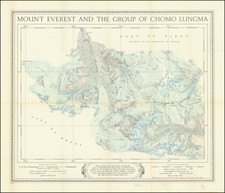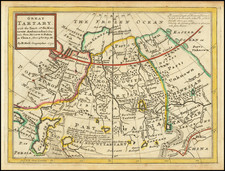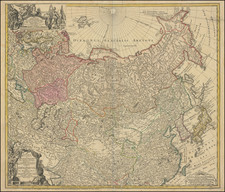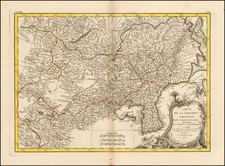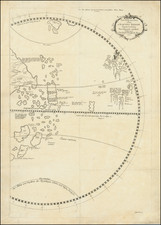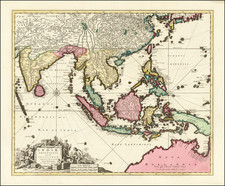Detailed British Admiralty Chart of the Amoy (Xiamen) inner harbor, first published in 1864.
The present example includes larger corrections to 1868 and smaller corrections to 1890 and bears the stamp of Philip Son & Nephew of Liverpool, Agents for the Admiralty Charts.
By the 19th century, the city walls of Xiamen had a circumference of around 9 miles, with an inner and outer city divided by an inner wall and a ridge of hills surmounted by a well-built fort The inner harbor on Yundang Bay was also well fortified and these defenses were further strengthened upon the outbreak of the First Opium War. Nonetheless, Xiamen was captured in 1841. Rear Admiral Parker bombarded the Qing position to little effect, but the assault by the men under Lietenant General Gough caused the Chinese to flee their positions. The city fell on August 27, 1841.
The next year, the Treaty of Nanjing made Xiamen one of the first five ports opened to British trade, which had previously been legally restricted to Guangzhou. Subsequent treaties opened the port to other international powers.
As the primary international port for Fujian, particularly Zhangzhou and its hinterland, Xiamen became a center of China's tea trade, with hundreds of thousands of tons shipped yearly to Europe and the Americas. Its principal exports during the period were tea, porcelain, and paper, while it imported sugar, rice, cotton, and opium, as well as some manufactured goods.
Xiamen was also a center of Protestant missionaries in China. The merchants of Xiamen were thought among the richest and most entrepreneurial and industrious in China. Owing to local belief in feng shui, the streets were "as crooked as ram's horns" and averaged about 4 feet in width to keep out sunlight and control public disturbances.
The British Admiralty has produced nautical charts since 1795 under the auspices of the United Kingdom Hydrographic Office (HO). Its main task was to provide the Royal Navy with navigational products and service, but since 1821 it has also sold charts to the public.
In 1795, King George III appointed Alexander Dalrymple, a pedantic geographer, to consolidate, catalogue, and improve the Royal Navy’s charts. He produced the first chart as the Hydrographer to the Admiralty in 1802. Dalrymple, known for his sticky personality, served until his death in 1808, when he was succeeded by Captain Thomas Hurd. The HO has been run by naval officers ever since.
Hurd professionalized the office and increased its efficiency. He was succeeded by the Arctic explorer Captain William Parry in 1823. By 1825, the HO was offering over seven hundred charts and views for sale. Under Parry, the HO also began to participate in exploratory expeditions. The first was a joint French-Spanish-British trip to the South Atlantic, a voyage organized in part by the Royal Society of London.
In 1829, Rear-Admiral Sir Francis Beaufort was appointed Hydrographer Royal. Under his management, the HO introduced the wind force scale named for him, as well as began issuing official tide tables (1833). It was under Beaufort that HMS Beagle completed several surveying missions, including its most famous voyage commanded by Captain FitzRoy with Charles Darwin onboard. When Beaufort retired in 1855, the HO had nearly two thousand charts in its catalog.
Later in the nineteenth century, the HO supported the Challenger expedition, which is credited with helping to found the discipline of oceanography. The HO participated in the International Meridian Conference which decided on the Greenwich Meridian as the Prime Meridian. Regulation and standardization of oceanic and navigational measures continued into the twentieth century, with the HO participating at the first International Hydrographic Organization meeting in 1921.
During World War II, the HO chart making facility moved to Taunton, the first purpose-built building it ever inhabited. In 1953, the first purpose-built survey ship went to sea, the HMS Vidal. Today, there is an entire class of survey vessels that make up the Royal Navy’s Hydrographic Squadron. The HO began to computerize their charts in the late 1960s and early 1970s. In 1968, the compilation staff also came to Taunton, and the HO continues to work from there today.









